Since we arrived in Cambodia, we’ve enjoyed a wide variety of stays! Angkor and its temples, Koh Kong and its beaches and the Cardamom Mountains… In short, we’ve enjoyed both architecture and nature. For this last stopover in Cambodia, it’s time for gastronomy! Kampot is world-famous for its pepper, while Kep is renowned for its seafood. Let’s discover these two gourmet towns as we like them!
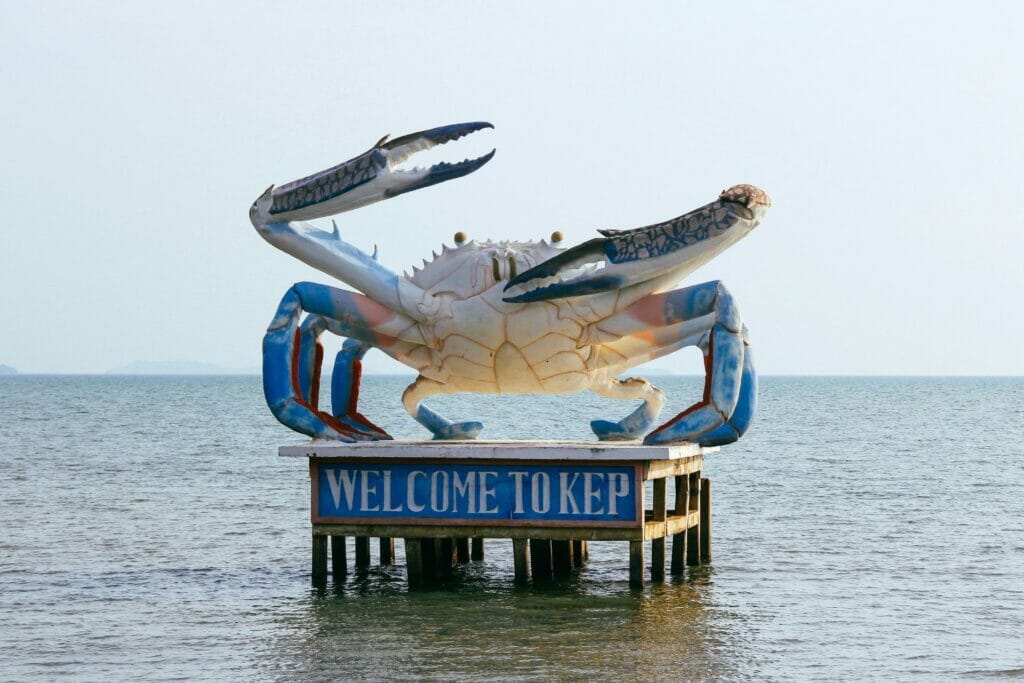
We took this trip at the end of 2013, but the article was completely revised and updated in August 2023. If you see any price changes or have additional information that might be relevant, please feel free to leave us a comment!
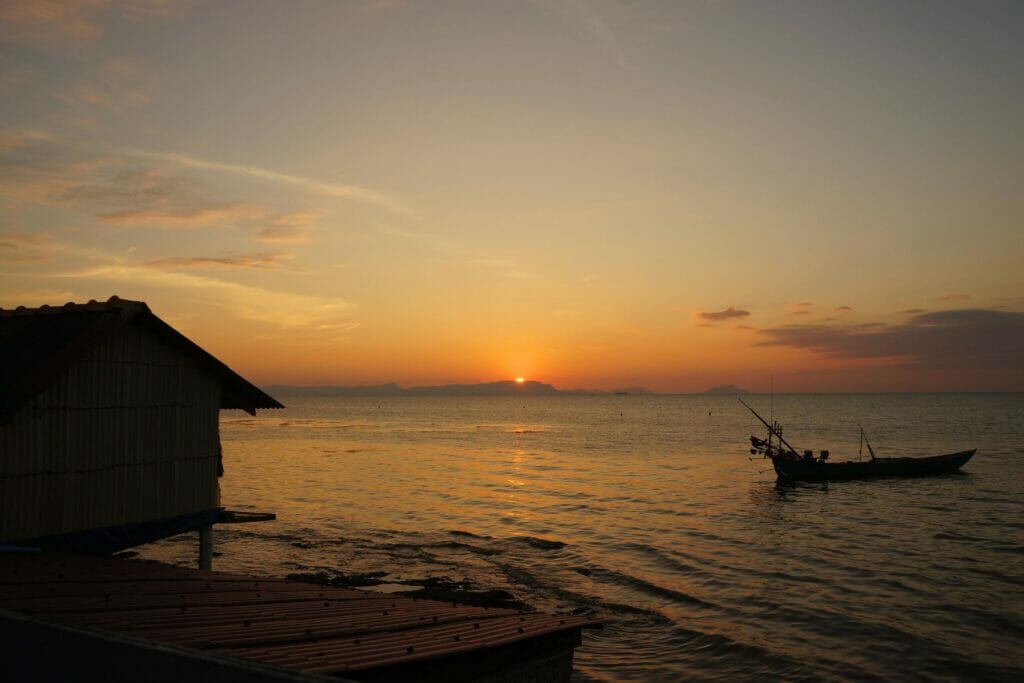
Practical tips for visiting Kampot
Back on the road, we head for Kampot, a charming town in southeast Cambodia, famous for its eponymous pepper. Kampot is a former French colonial town, and as you visit, you’ll notice the architectural remains of that era.
How to get to Kampot
From Koh Kong, it takes another full day’s transport to drive 200 km! Roads in Cambodia are in much worse condition than in Thailand or Vietnam… To reach Kampot, you have a more comfortable option than a minivan avoiding potholes: the train!
From Koh Kong
From Koh Kong and the Cardamoms, you can travel to Kampot via Phnom Penh. It’s best to check directly with the minivans at the Koh Kong bus station. From the capital, all you have to do is take a bus/minivan or train (more on this below).
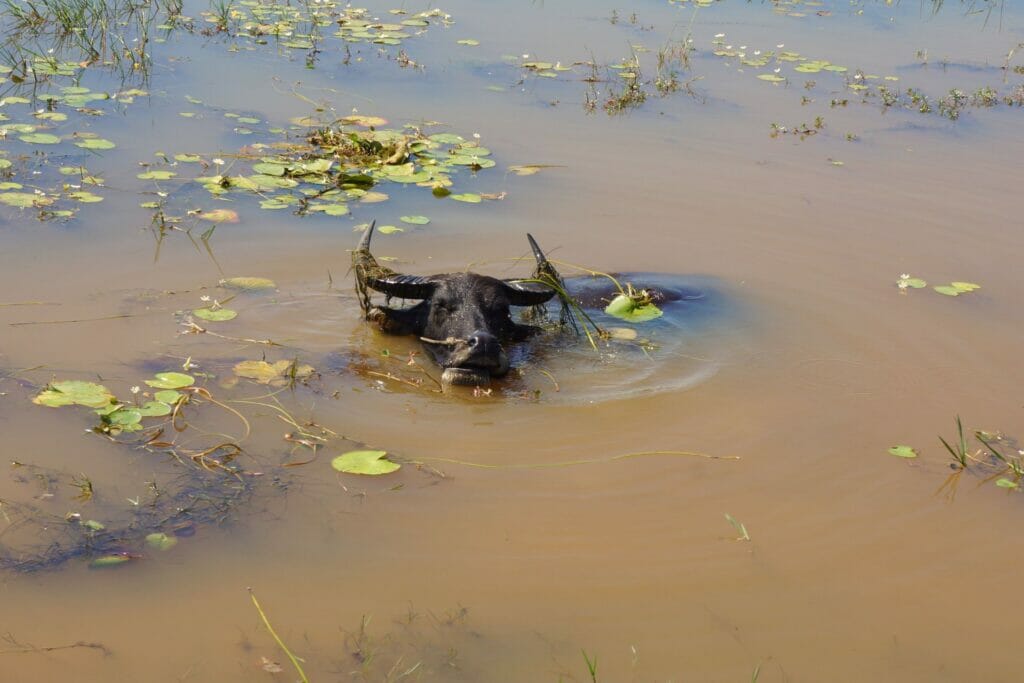
From Siem Reap
The Giant Ibis bus company is the only one that runs between Siem Reap and Kampot, with a stop in Phnom Penh. As it runs at night (leaving Siem Reap at 10:30 p.m. and arriving at 8 a.m.), it’s a great way to save a night at the hotel! Tickets cost $25. If you can’t make the night trip or prefer to visit the capital, you can do Siem Reap-Phnom Penh by bus, then Phnom Penh-Kampot by train or bus. Details of the journey from the capital are given below.
Taking an internal flight between Siem Reap and Sihanoukville and then a train to Kampot is possible, but we don’t recommend it. Flights are expensive, costing around $120-130 per ticket.
From Phnom Penh
You’ll easily find a bus to take you to the south of Cambodia. Tickets cost around $8-10 and the journey takes between 3 and 5 hours (big range!). Check the timetable for Phnom Penh-Kampot. From the capital, there is only one train a day to Kampot, leaving at 7 a.m. In fact, Kampot (and Kep) is a stopover on the Phnom Penh-Sihanoukville trip. If you leave at 7 a.m., you’ll arrive in Kampot at 10.40 a.m. for $9/person. Yes, it’s about the same time and price, but without the “stress” of Cambodian roads…
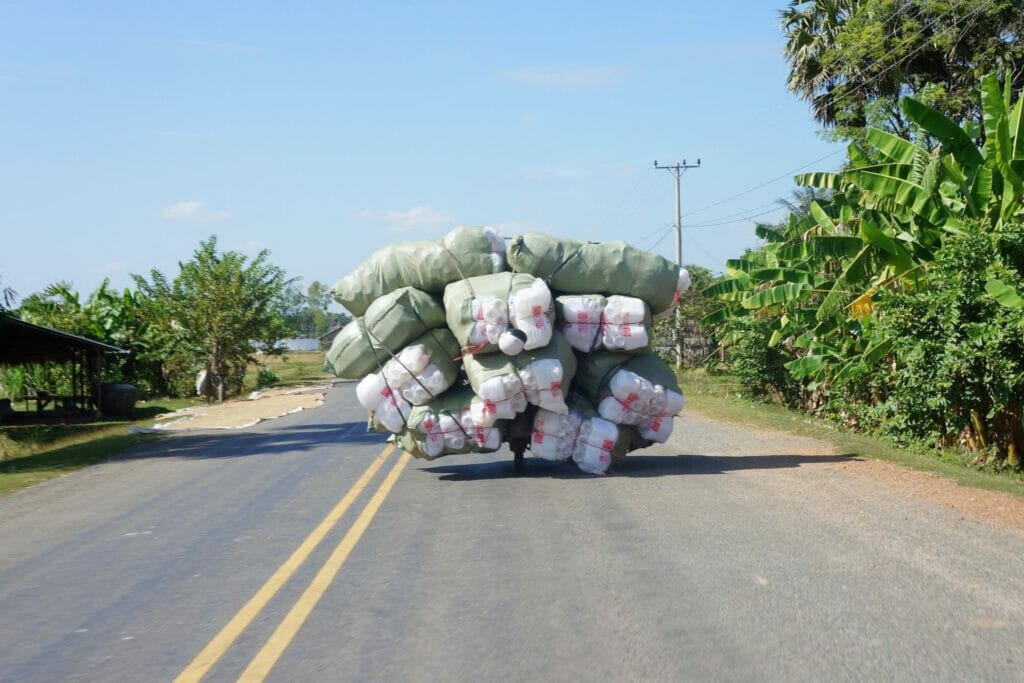
Hotels in Kampot
There’s a wide choice of accommodation in Kampot, but we still recommend you stay by the river. Here’s our selection of hotels in Kampot to suit all budgets:
- Monkey Republic Kampot and Yellow Sun Kampot: two good budget hostels (4-5 euros a night in a dormitory). The first is very well located and has its restaurant. The second is a little more out-of-the-way and has its feet in the river! Both offer bike/scooter rental.
- Hôtel La Java Bleue: it’s impossible to think of Kampot without La Java Bleue! Housed in an old colonial building, this charming hotel is more like a guesthouse, offering just 5 uniquely styled and tastefully decorated rooms.
- Kampot Cabana: a 15-minute walk from the center, Kampot Cabana offers bungalows in a veritable oasis on the water’s edge. Bicycles and scooters can be rented to explore the area.
- Monica Guesthouse: this simple but comfortable guesthouse is just a stone’s throw from Kampot town center. Bike/scooter rental is also available. Special mention for the terrace and swimming pool.
This article contains affiliate links to partner sites. When you use our links to book accommodation, a car, or an activity, you don’t pay anything extra, but we get a small commission. This helps us to offer you free, independent, and ad-free content. Thank you for your support!
Things to do in Kampot
In Kampot, one thing’s for sure: you’ll enjoy the city’s bucolic environment and a certain joie de vivre! It’s easy to see why expatriates have set their sights on the region. If you’re coming from Siem Reap or Phnom Penh, Kampot will delight you with its romance and calm, far from the tourist hustle and bustle. We spent 3 days there, and it’s a good length of time to enjoy the tranquility of the place. It’s also easy to rent a motorbike to explore the surrounding countryside for just a few dollars. We only visited the pepper plantations, but there are plenty of things to do in and around Kampot! Here’s a quick rundown of the local attractions. You’ll find all the highlights on the map at the end of the article.
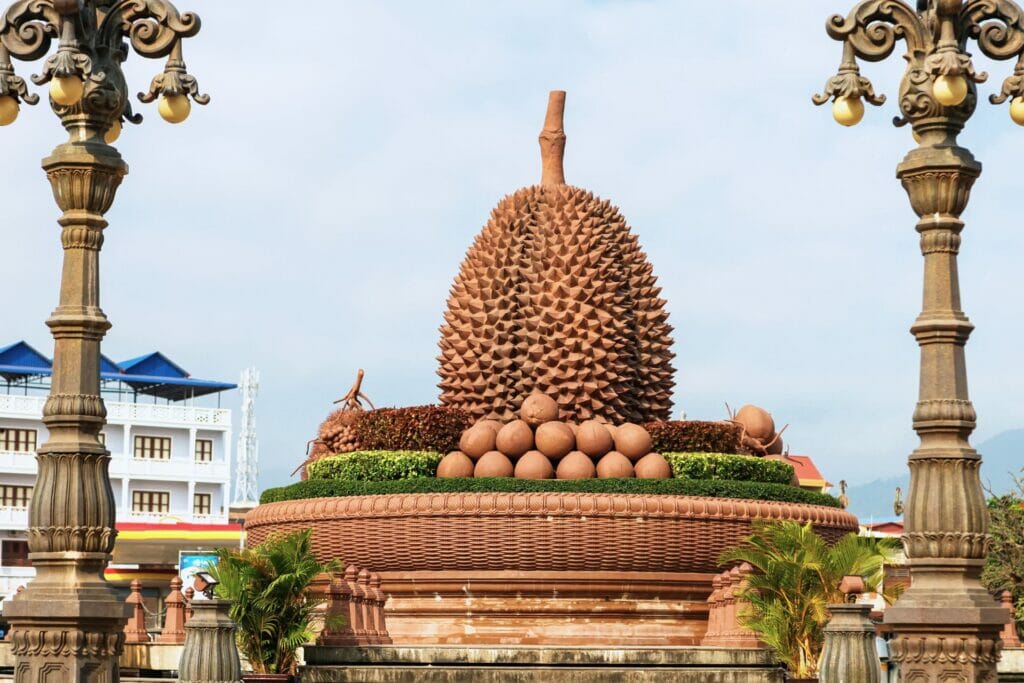
Wandering the streets
Kampot is well known for its old colonial buildings. Take a stroll to admire this beautiful architecture, which contrasts with the modernity that pervades the city. These include the Old Cinema Hotel, the Fish Market, the National Bank, the Kampot Provincial Museum… At one point or another, you’re bound to come across a non-colonial curiosity: the roundabout in the heart of town, with a giant durian at its center!
At dusk, stroll along the Preaek Tuek Chu River for a soothing stroll before the night world awakens.
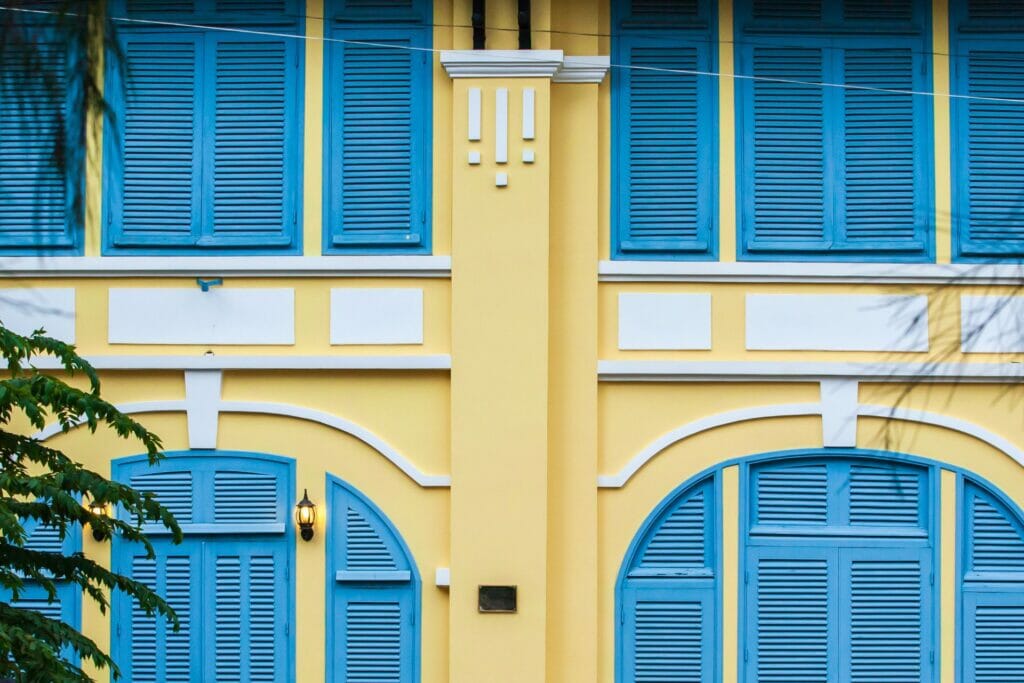
Visiting a Kampot pepper plantation for a tasting session
For a taste of Kampot pepper, one of the world’s finest, there’s only one address! We recommend La Plantation, run by Guy and Nathalie. This Franco-Belgian couple took up the challenge of building a Kampot pepper plantation on an uncultivated plot of land! Today, they offer tours (in English) and tastings of their many Cambodian spices (grown organically). They even have a restaurant and serve amazing pepper ice cream (which is said to be to die for)! La Plantation is first and foremost an environmental, social and architectural project, and we’re more than fond of these fine initiatives!
Note: the road east of Kampot is magnificent!
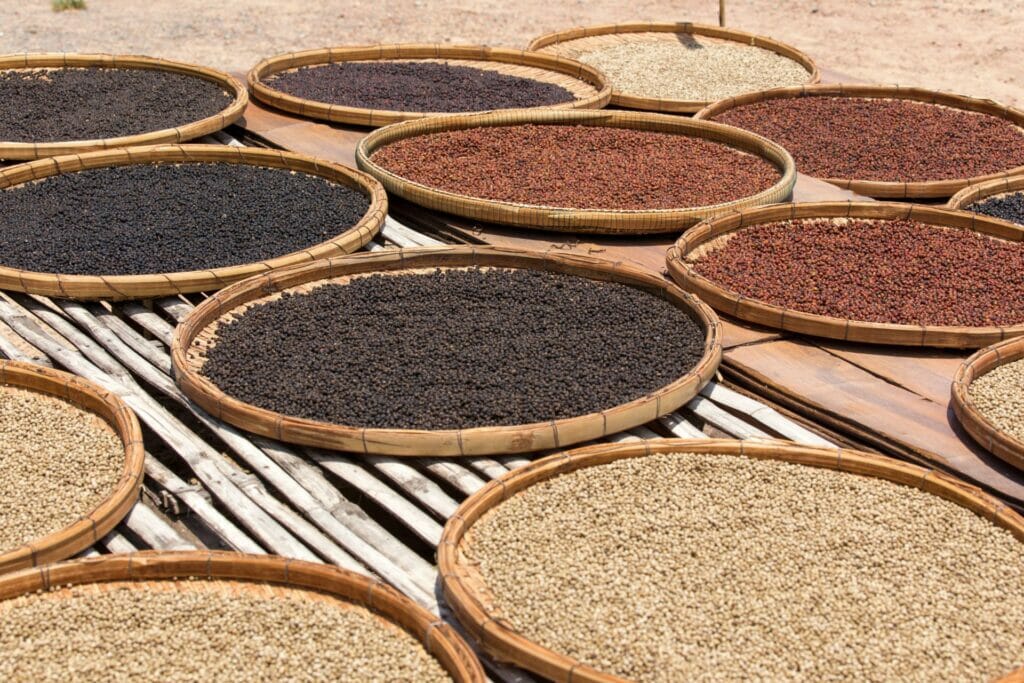
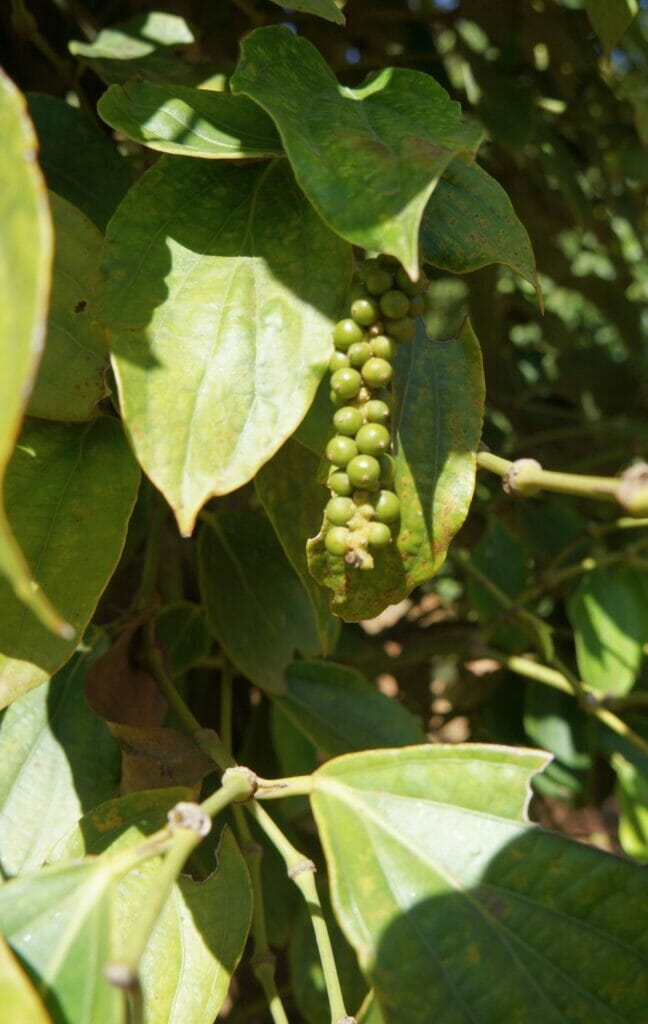
Strolling through the salt fields
Another special feature of Kampot is its salt cultivation (to go with the pepper!). The salt fields are located on the island opposite downtown Kampot. By bike or scooter, take the Entanou Bridge or the old French bridge to the south, then the Fish Island Road, which takes you directly to the island. Stroll through the narrow streets and watch the Cambodians harvesting the precious crystals. For the record, the salt harvest takes place from December to May. Another place to see the salt marshes is to the southeast of the city, on the wide strip between the island and the mangroves of Trapeang Sangkae. In a word: get lost in the little streets of Kampot on either side of the Praek Tuek Chhu River!
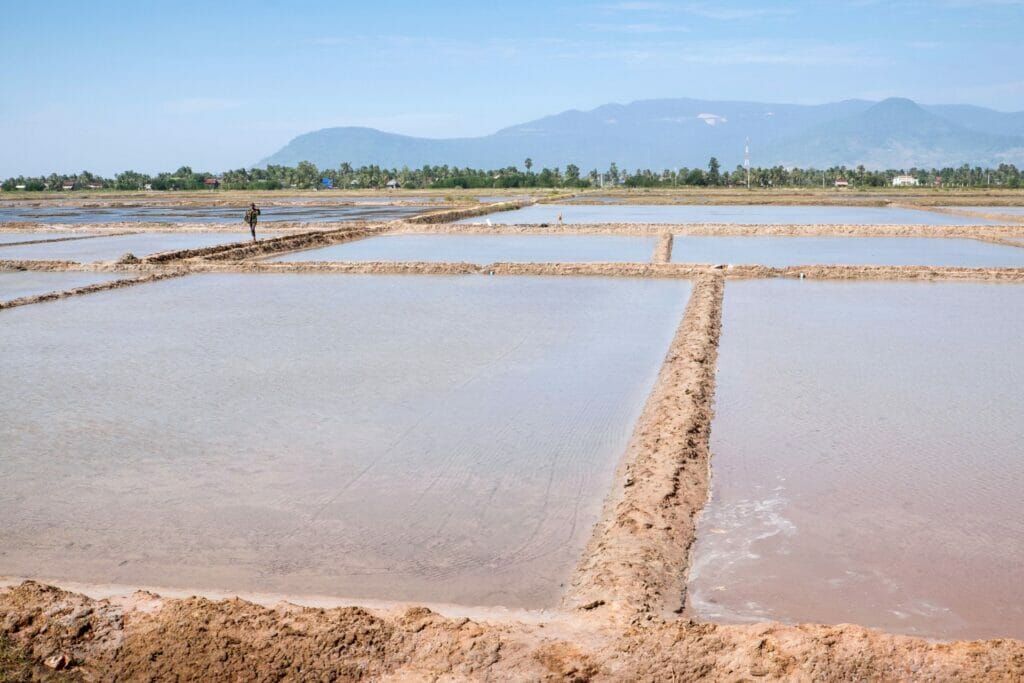
Kayaking around the Green Cathedral
Don’t imagine a religious building painted salad green! In fact, the Green Cathedral is a loop on the Praek Tuek Chhu River, framed by palm trees that form a tunnel. You’ll find plenty of kayak rentals along the river for a quiet tour.
Alternatively, you can take a boat trip to the mangroves to the southeast of Kampot. To find a boat, visit Trapeang Sangkae Ecotourism, 7 km from downtown.
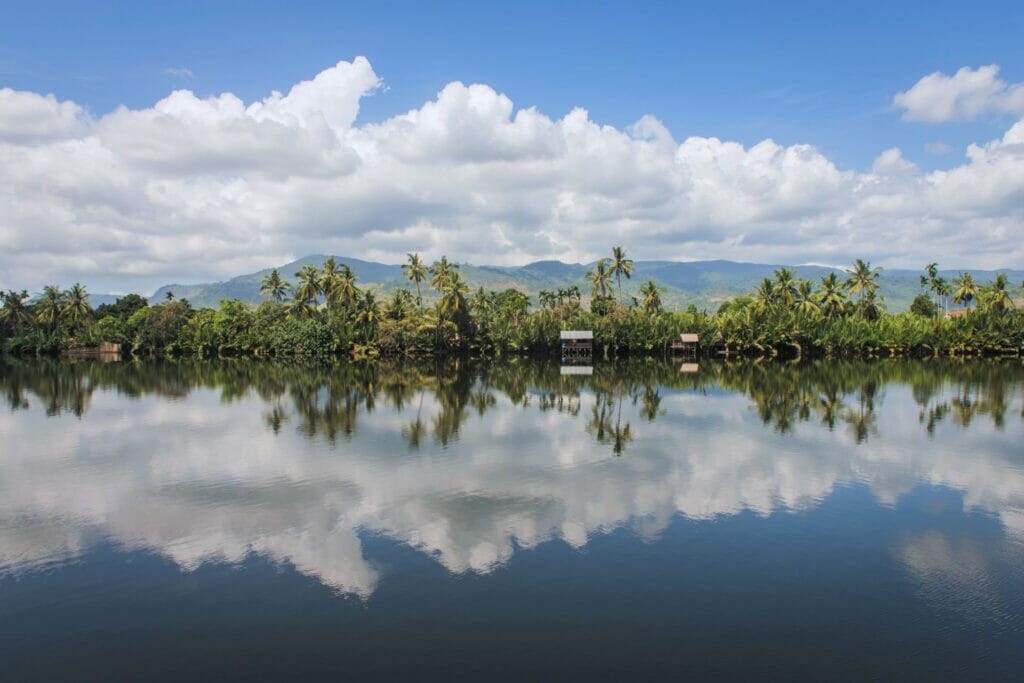
Hiking on Bokor Mountain in Preah Monivong National Park
The city of Kampot is bordered by Preah Monivong National Park (mistakenly called Bokor National Park), and on its heights lies Mount Bokor, culminating at 1081 m altitude. After a 1 h drive with many twists and turns, you’ll reach the top, at the Bokor hill station. This former climatic station dates back to colonial times and was built as a resort for colonists and the Khmer bourgeoisie.
The site includes the Black Palace, the former residence of King Monivong; the Buddhist temple of Sampov Pram; the Bokor Palace, a former Khmer Rouge stronghold that has since been abandoned and renovated; and, next door, the mournful-looking Bokor Catholic Church. In between these ruins stand more recent constructions… In short, the Bokor hill station is a must-see for its special atmosphere and its breathtaking view of the coast and ocean!
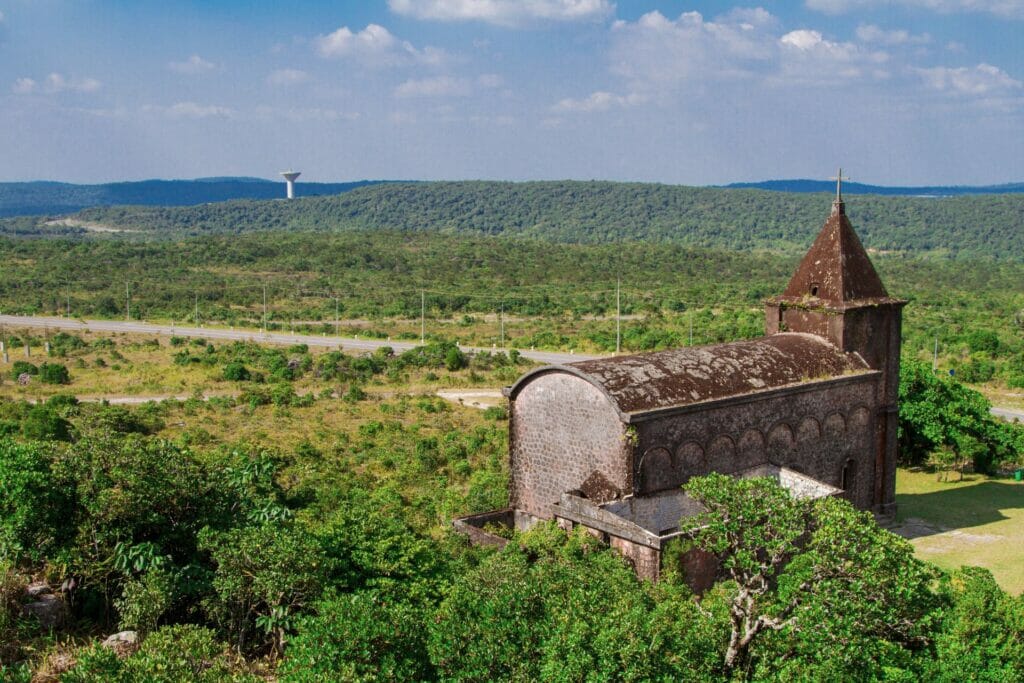
Cooling off in the Phnom Kbal Romeas and Phnom Chhngok caves
Located 15 minutes from downtown Kampot, the prehistoric Phnom Kbal Romeas cave now houses a small temple worth exploring if you’re wandering east of Kampot. A little further on, you can visit the Phnom Chhngok cave, which contains a Hindu temple dating back to the 7th century.
Practical tips for visiting Kep
30 km further east of Kampot lies the small coastal town of Kep, where we plan to spend Christmas. So, Kep is basically a succession of fairly expensive hotels spread out over a dozen kilometers of oceanfront. Don’t worry, though, there are one or two low-cost alternatives! To tell you the truth, we had rather mixed feelings about this place… If you have to choose, we prefer the good atmosphere of Kampot, but you must at least stop by Kep for one thing: to eat crab 🦀!
Depending on what you’re tempted to do in Kep, we recommend spending 1 or 2 days there. Another option is to sleep in Kampot and take a day trip on a motorbike.
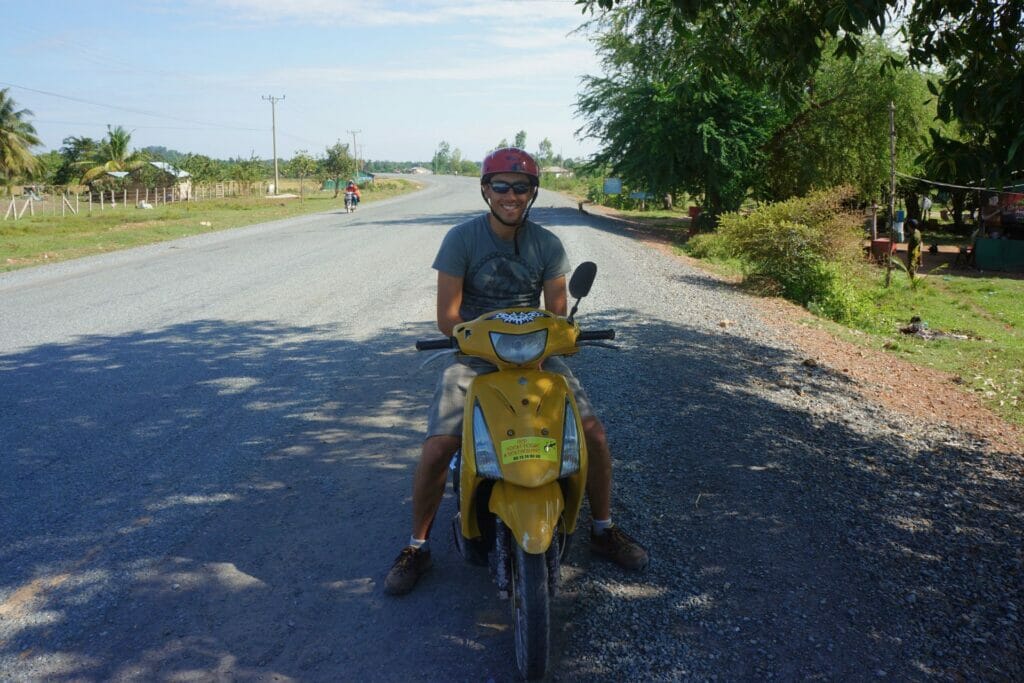
How to get to Kep
From Kampot
Being only 30 km from Kampot, Kep is really easy to get to! It took us 5 hours, but I assure you, that’s not at all the norm! By motorbike, it’s really easy for a day trip. If two-wheelers aren’t for you, you can take the train or a minivan for $4 each.
From Koh Kong
From the island of Koh Kong and the Cardamom massif, there’s no direct minivan service to Kep, so you’ll have to travel via Phnom Penh. The easiest way is to get information directly from the Koh Kong bus station. Then take a bus/minivan or train to Phnom Penh (you’ll find all our explanations below).
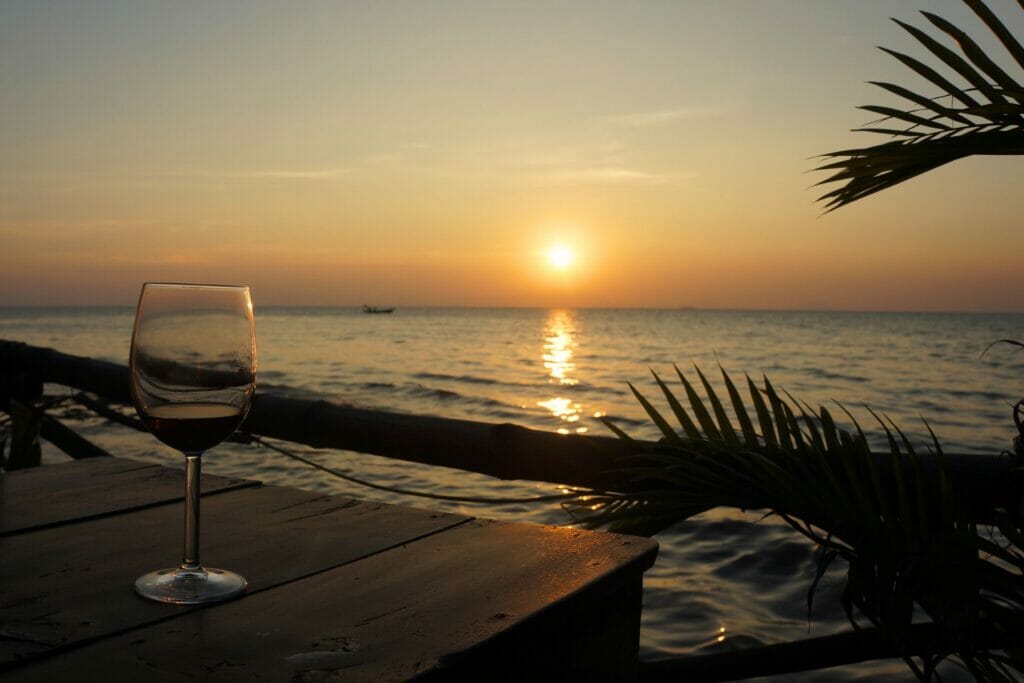
From Siem Reap
There’s only one bus from Siem Reap to Kep. The journey is a little long (13 h 25), but the bus leaves at 11 p.m. for an overnight trip with a stop in Phnom Penh. The ticket costs $23 each. Alternatively, you can go directly to Phnom Penh, visit the city and take the bus or train to Kep.
From Phnom Penh
By minivan, it will take you around 3-4 h to reach Kep for $9. By train, you’ll take the same one as for Kampot, which departs daily at 7 a.m. from the capital in the direction of Sihanoukville. The train ticket costs $8 per person.
Hotels in Kep
Despite the high season, half the hotels are empty! There’s not a huge number of activities either, Kep’s beach is very small and prices are quite high for Cambodia. For the record, you won’t find anything under $10/night… As mentioned above, it can literally be worth it to sleep in Kampot and visit Kep for a day.
Here are a few hotels to give you an idea:
- Kep Melting Potes: this small guesthouse with its own restaurant is located on the coast. A double room costs $12.
- Bird of Paradise Bungalows: these charming bungalows are well-situated for exploring the town. They cost $17 per night.
- Casa Kep Garden Café and Guesthouse: for a double room with breakfast air-conditioning in beautiful surroundings, charge $33 per night.
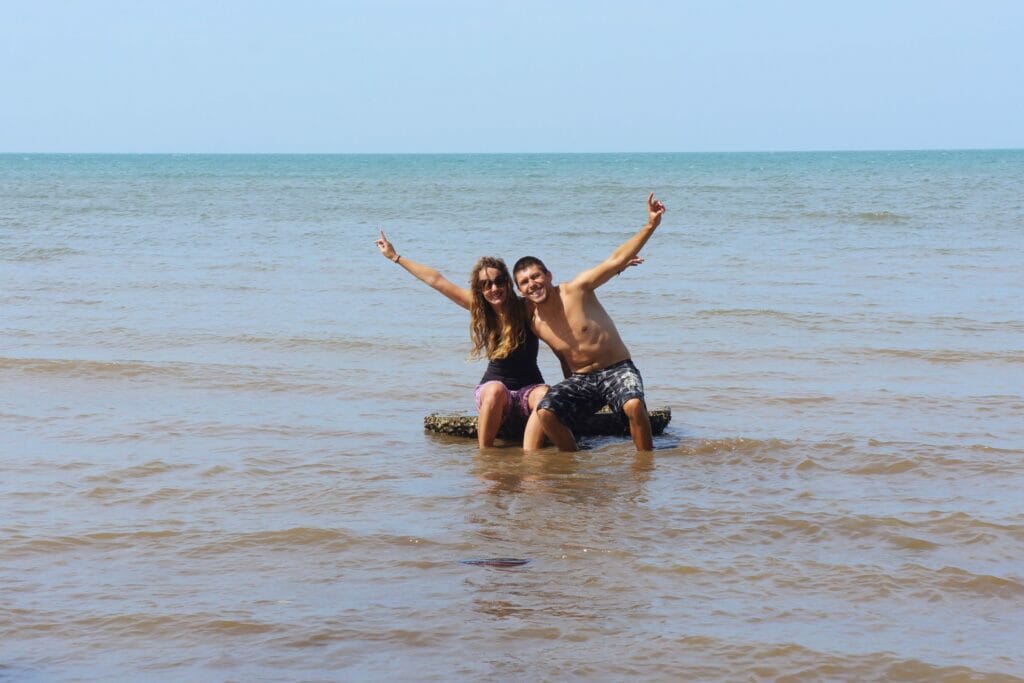
Things to do in Kep
Even if Kampot offers more things to do and places to visit, Kep still has a lot to offer. We’ve listed everything there is to do in this seaside resort on the map at the end of this article.
Eating crab and walking through the crab market
After Kampot pepper, it’s time for seafood, especially Kep crab! A real specialty of the town, you won’t want to miss it. For a real treat, we recommend the Kimly Seafood restaurant! There, you’ll be able to taste the green pepper crab, just divine! In fact, we had quite a feast on Christmas Eve, and the night before, we even found some cheese! We were just happy 😊.
In the evening (or early morning if you feel like it), stroll to the crab market, right next to Simly, to watch the crabs arrive to be discovered and sample other crustaceans and seafood.
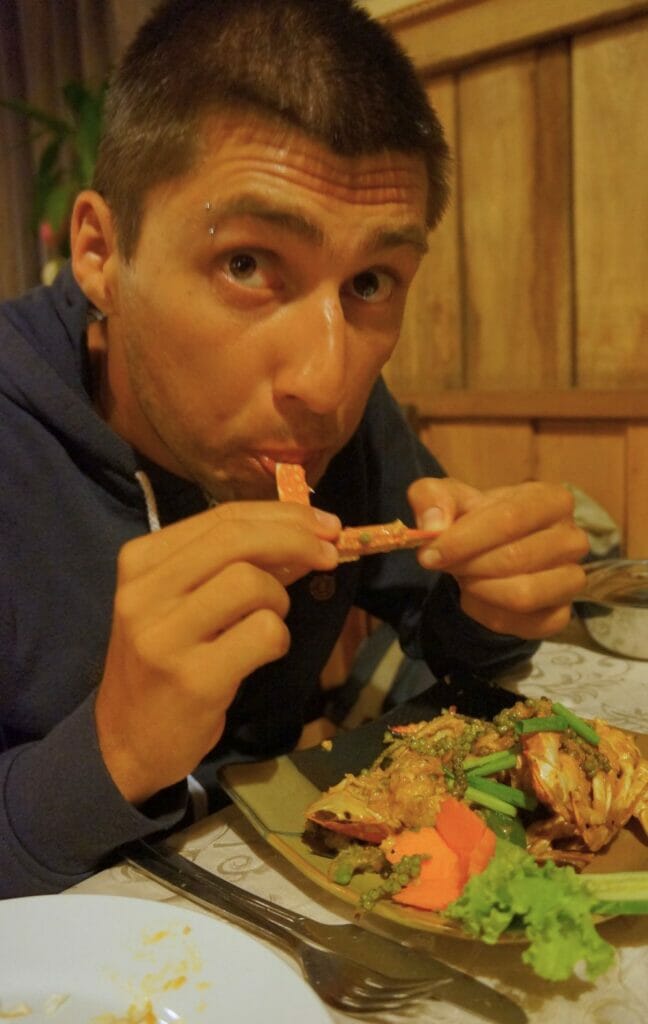
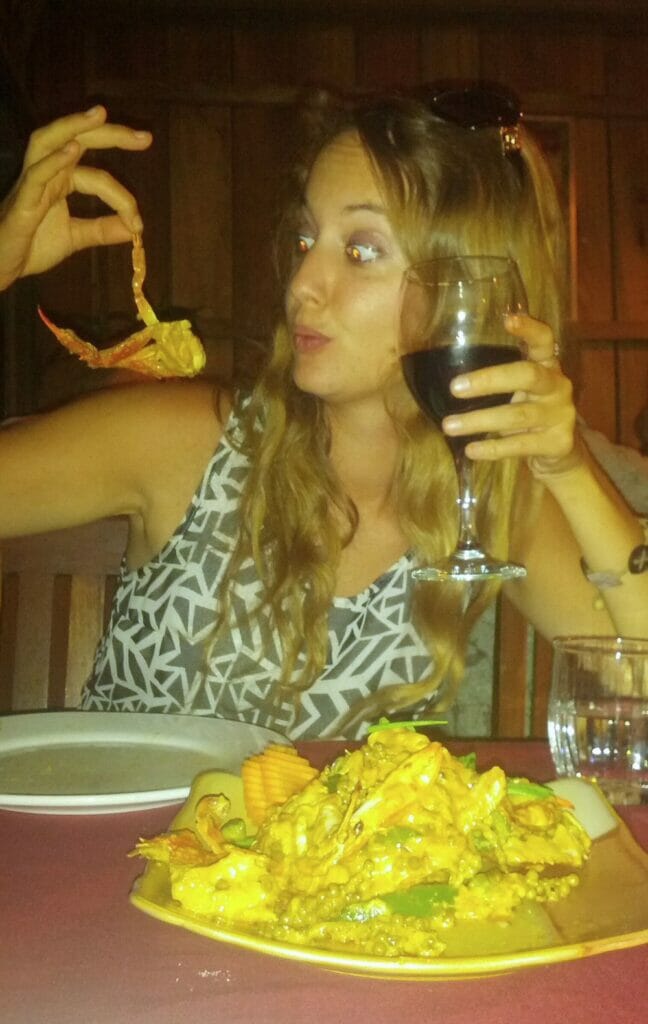
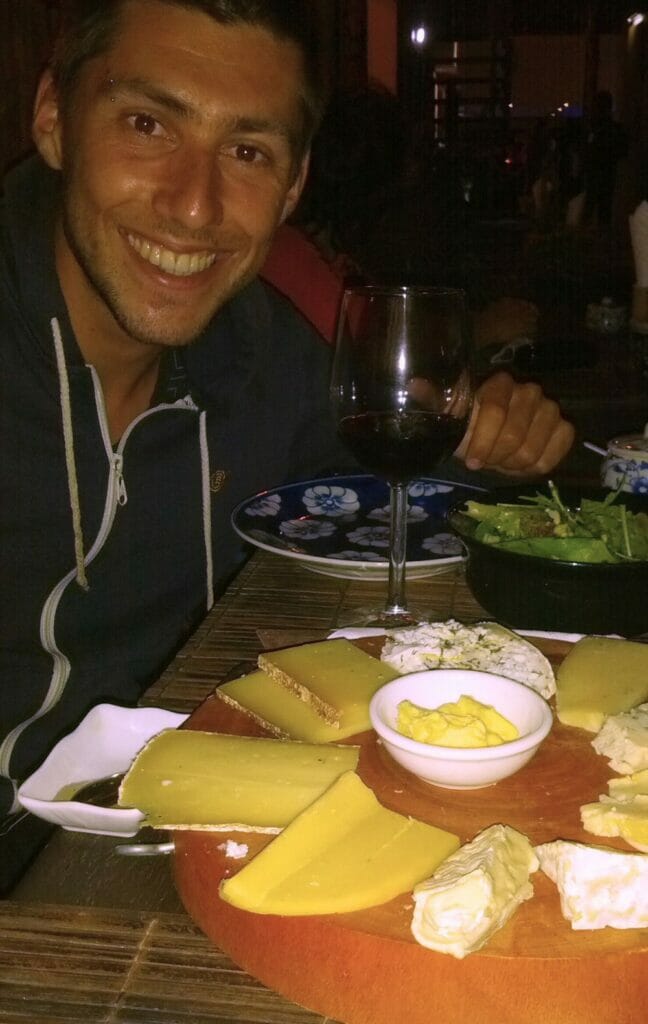
Climbing in Kep National Park
We also enjoyed a stroll through Kep National Park. Several trails crisscross this beautiful green space. Special mention for the splendid view from Sunset Rock in the late afternoon!
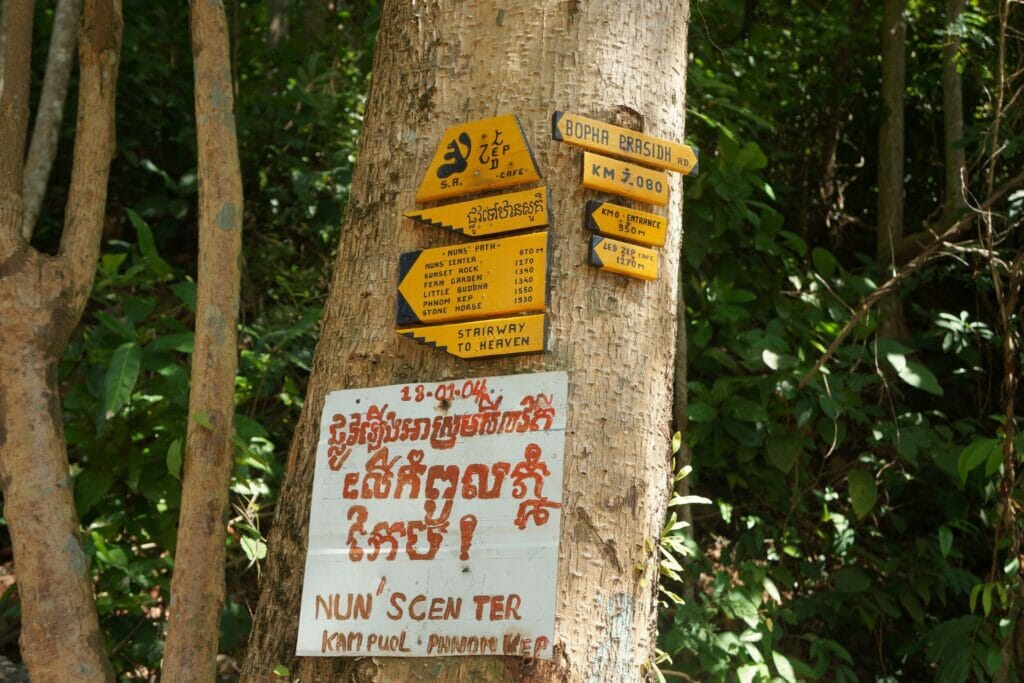
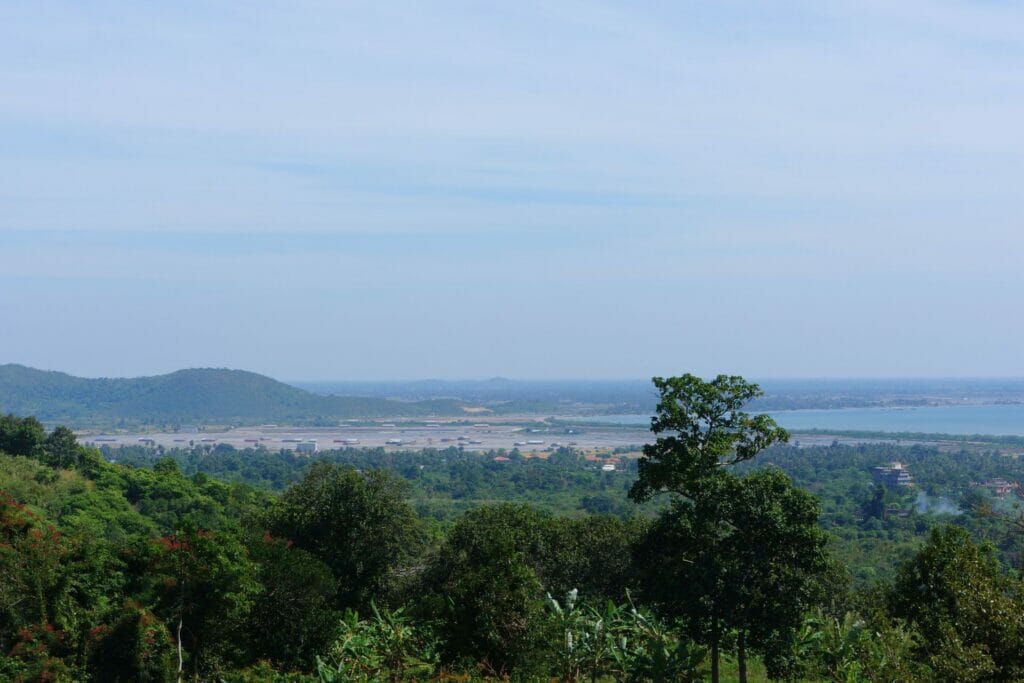
If you have time, climb up to the Wat Samathi pagoda on the eastern edge of the park. First of all, because you’ll have missed all the temples since your visit to Angkor (admit it!). And also, this Buddhist pagoda is quite singular in the bright colors of its frescoes, and its visit is well worth the effort. First, you have to find the path (it’s close to the Kep Kiri Resort), then climb the few steps to the top. You’ll probably be alone to enjoy the tranquility of this sacred site. As a bonus, you’ll have a lovely panoramic view of the surrounding area!
Taking an excursion to Koh Tonsay, the Rabbit Island
Another island in the south of Cambodia, you might say. True, but Koh Tonsay Island is the kind of island you don’t want to leave. In a word, a 2 km2 Cambodian haven of peace located 4 km from Kep. If we had to choose, we might have been better off sleeping on Rabbit Island for the same price as in Kep!
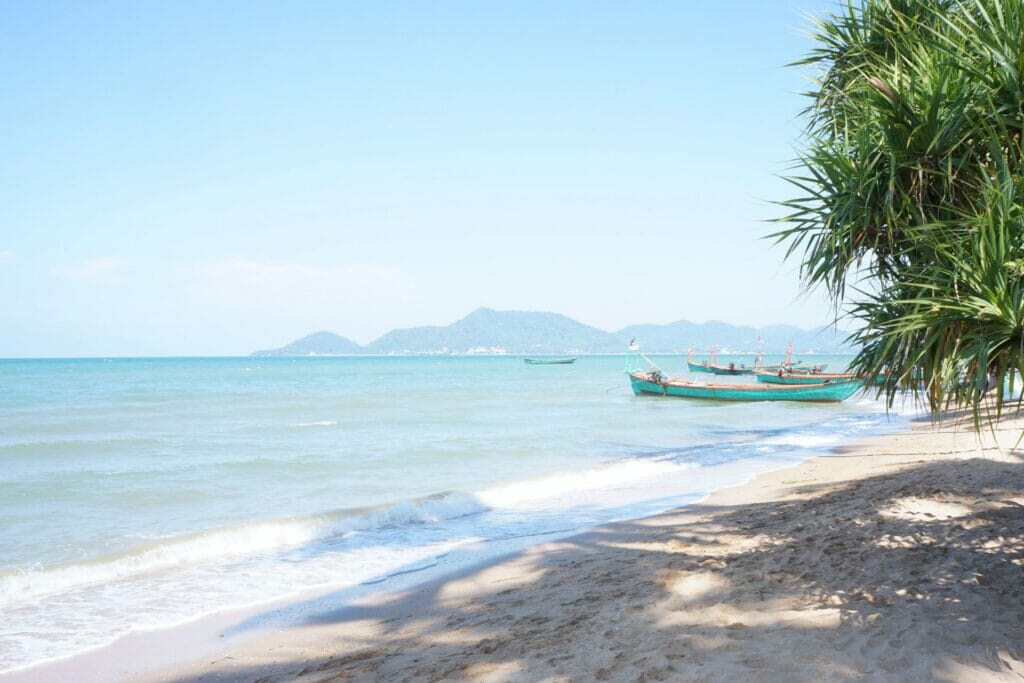
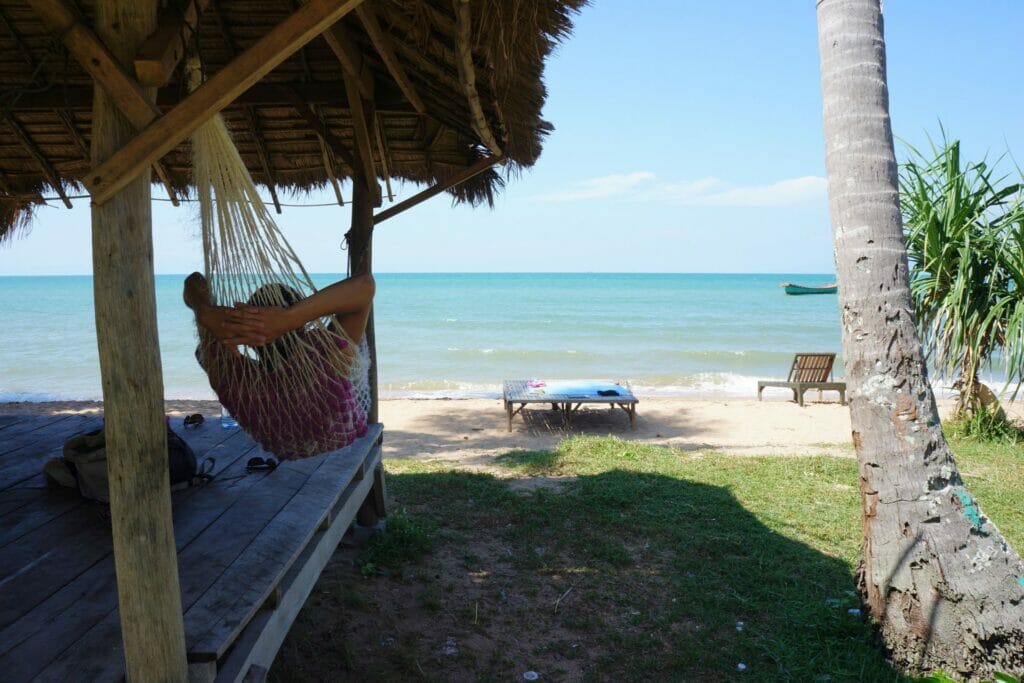
To get there, you’ll need to take a private or local boat. The private boat trip takes around 30 min and costs $25, whether 2 or 6 of you board. You can buy a ticket at Kep’s small harbor. For the local boat, ask in town: agencies offer tickets for less than $10. They usually leave around 9 a.m. and return at 4 p.m. the same day.
There’s a 6 km path around Koh Tonsay, so you can enjoy all the island’s beaches at your own pace and… do nothing, just enjoy!
Oh, and if you’re wondering why Koh Tonsay is called Rabbit Island, note there are no rabbits on the island, and the shape of the island doesn’t really evoke this little mammal… In short, the name is a mystery!
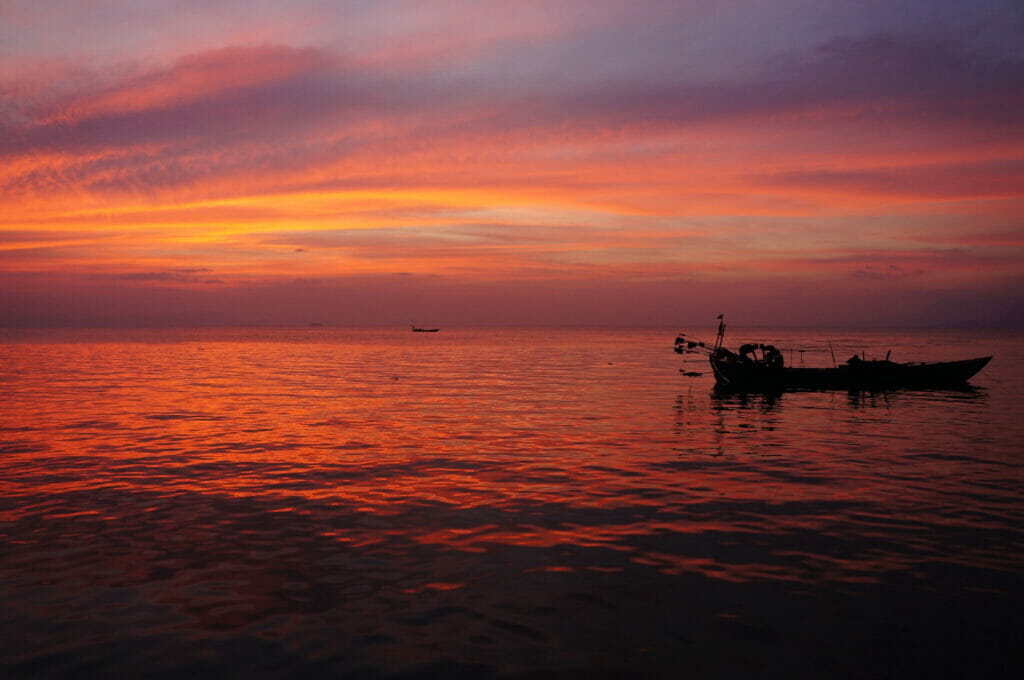
Map of Kampot and Kep
We’ve recorded all our good addresses in Kampot and Kep on this map. Enjoy!
Finally, southern Cambodia isn’t all that crowded, and it would be a shame not to stop here. Two atmospheres and two possibilities. To the west, we recommend trekking in the Cardamom Mountains and playing Robinson Crusoe on the island of Koh Kong. To the east, visit the pepper plantations of Kampot and enjoy the good vibes of the city before stopping for a Kep crab at Kimly!
So, are you ready to see something other than the temples of Angkor in Cambodia? 😉 We’ve come to the end of our tour of the country, and as usual, we’ll see you in Cambodia’s final budget article!
Pin it
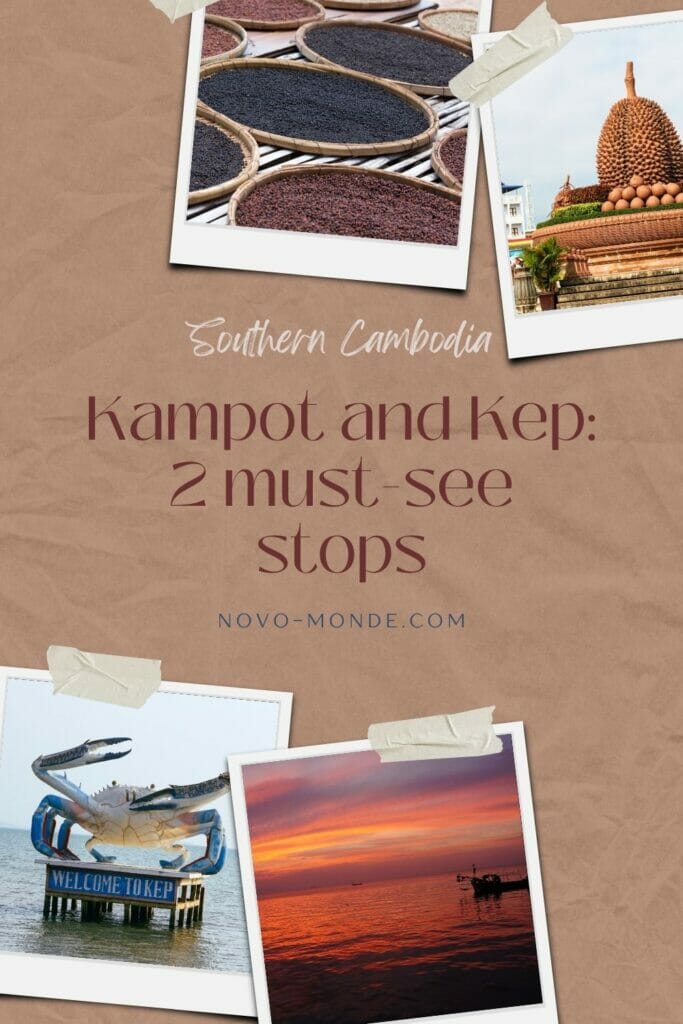
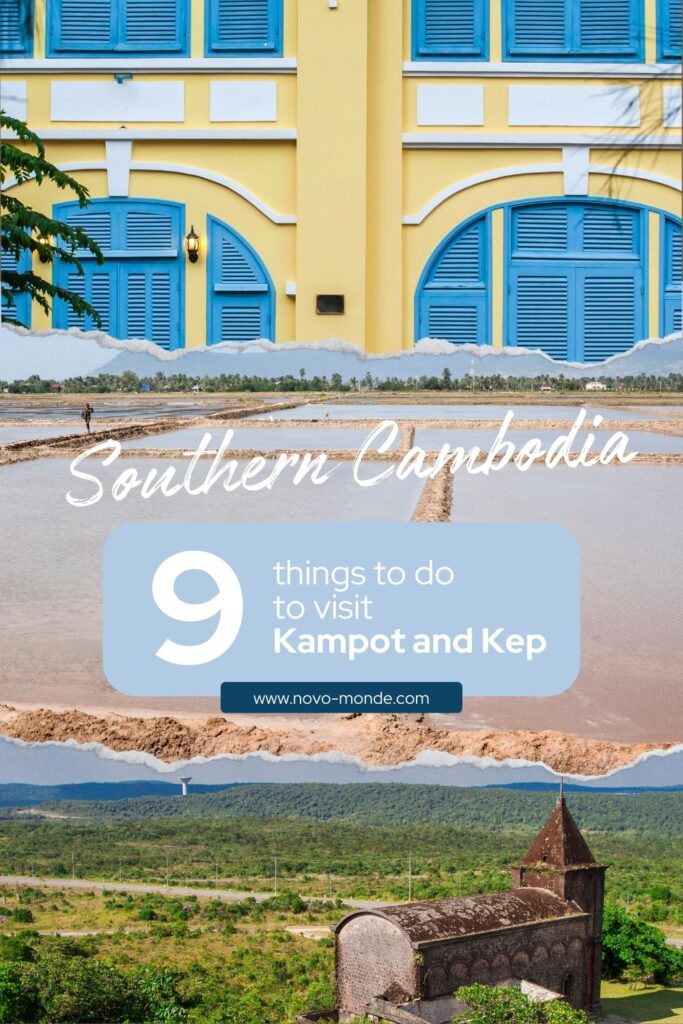
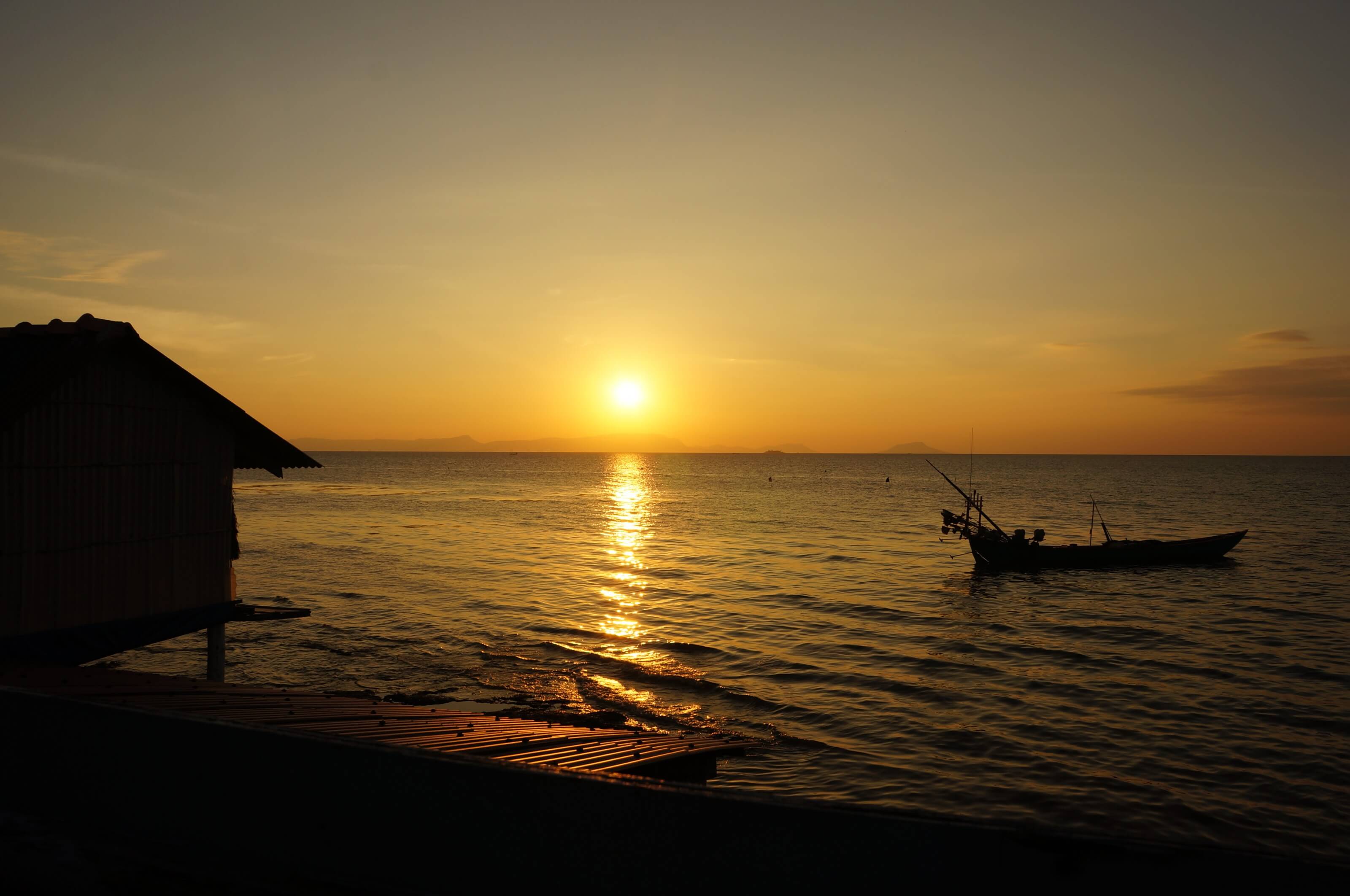
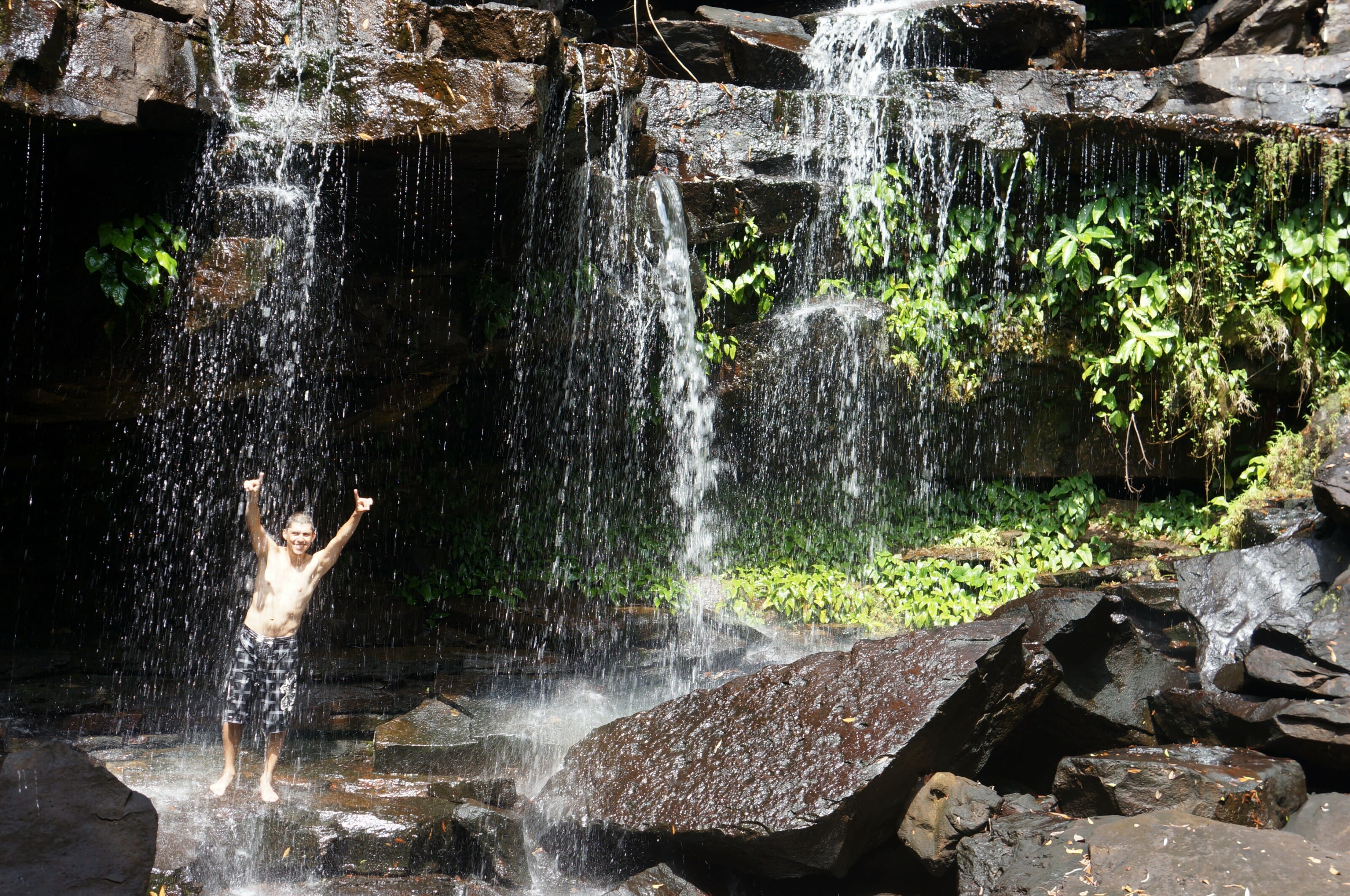
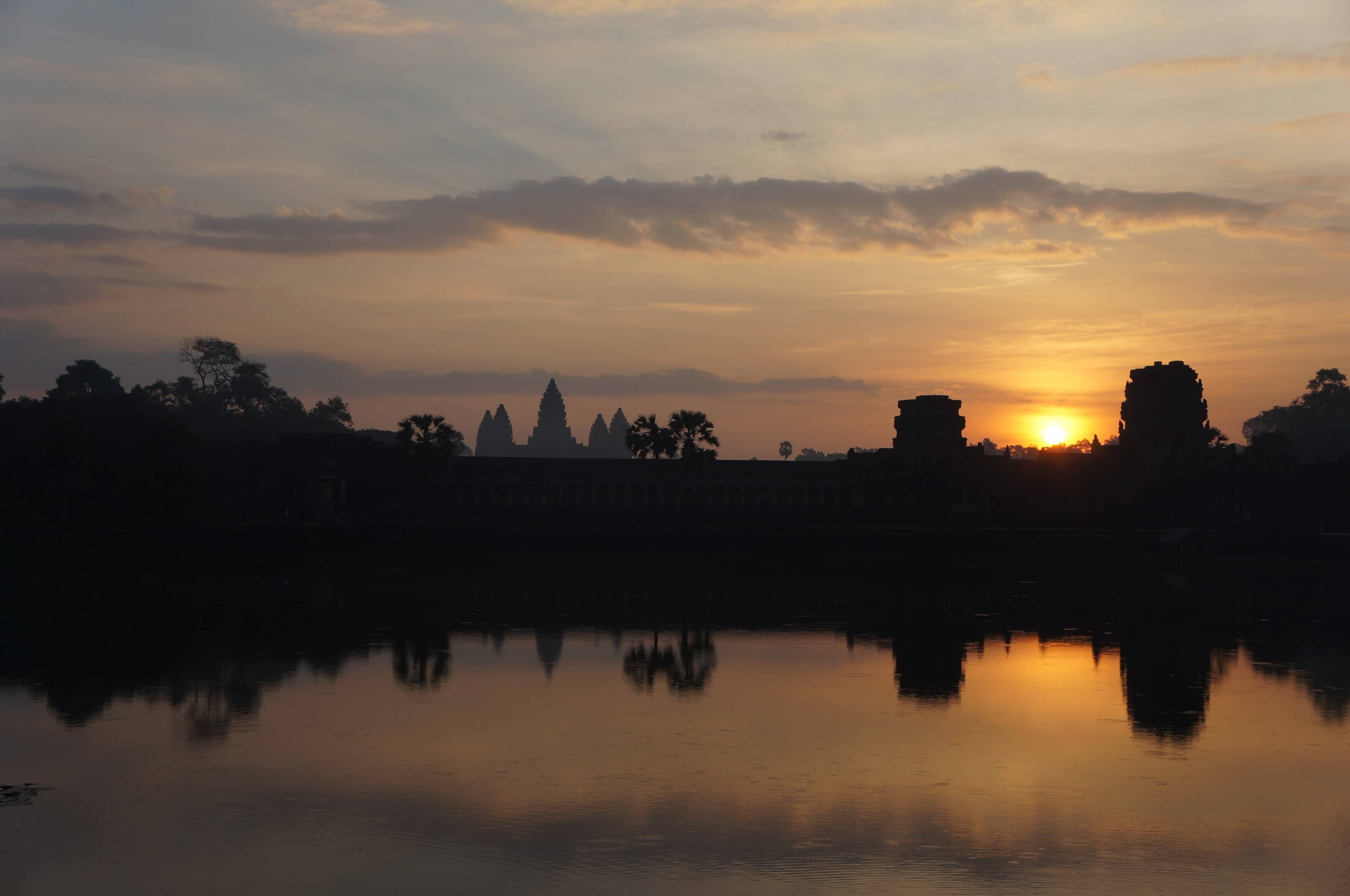
Join the discussion